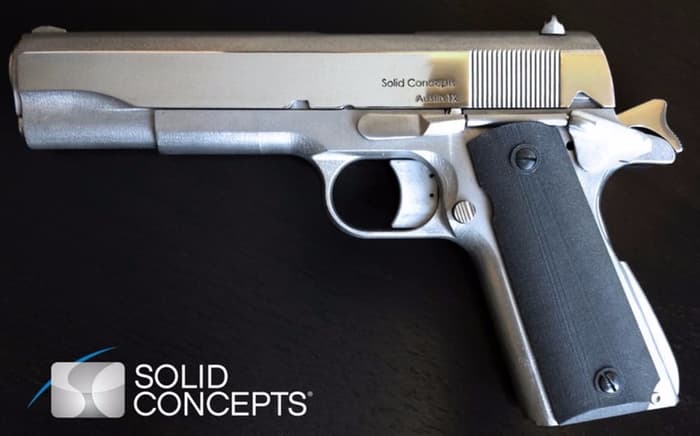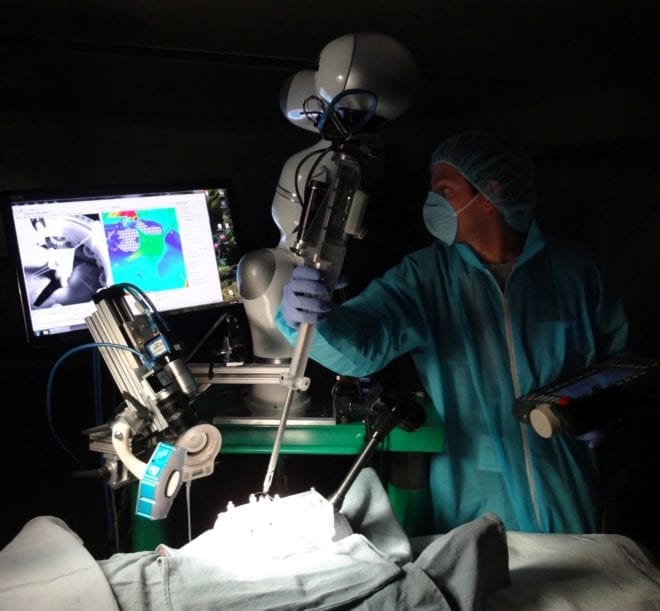
From the bow to the bunker buster to the hydrogen bomb, new technologies have changed the face of warfare, and 3D printing looks set to be just as revolutionary. It’s been around since the 1980s, but as key patents expire and access to the technology becomes more readily available, its effects on the military promise to be considerable – though the biggest and most immediate impact may be from a surprisingly humble quarter.
Mention 3D printing and it’s likely to conjure up images of wonky key fobs brought home as trophies from middle school science projects. But the ability to print solid objects in three dimensions (also known as additive manufacturing) is more than just squirting out molten plastic under the direction of a CAD file. Modern printers can now handle metals, wood, fabric, foodstuffs, pharmaceuticals, and even living cells with not only greater precision than ever before, but also in combination with one another in complex patterns that simply cannot be matched by conventional techniques.
With the ability to work with such a range of materials, 3D printing allows engineers to create prototypes of components and even complete devices in a fraction of the time previously needed and at much lower cost. Not surprisingly, such capabilities have attracted the attention of defense contractors and military planners. The question is, how will 3D printing actually change life for the soldier of the 21st century?
Weapons of war
The most obvious area is that of weaponry. When Cody Wilson unveiled his Liberator printable plastic gun, it caused a conniption among lawmakers and gun control advocates. Keeping track of firearms so they don’t fall into the wrong hands has always been a major headache on the national and international scene, but the idea that anyone with as printer and access to the internet could print a handgun stacks up as a nightmare scenario.
Worse, it soon became apparent that such printable weapons weren’t restricted to plastics. Using lasers and electron beams, more advanced printing systems can fuse metal alloy powders layer by layer to form complex objects. A case in point is Solid Concepts‘ creation of a fully functional 1911 semiautomatic pistol from 3D printed parts. This not only looked identical to a conventional firearm, but it had all the necessary parts and could be fired.
Learn more: 3D printing goes to war
The Latest on: 3D printing
[google_news title=”” keyword=”3D printing” num_posts=”10″ blurb_length=”0″ show_thumb=”left”]
via Google News
The Latest on: 3D printing
- Massivit to Launch Affordable Large-Format 3D Printer at drupa 2024 International Printing Show in Germanyon May 8, 2024 at 5:27 am
The Highly Anticipated Massivit 3000 Printer Provides an Affordable, High-Performance 3D Printing Solution for Print Service Providers and Entertainment Fabricators. LOD, Israel, ...
- 3D printing store now open in Fingerlakes Mallon May 8, 2024 at 3:00 am
A new store at Fingerlakes Mall is focused on 3D printing, with both parts for the technology and items made by it.
- Camhirst Robots Introduces Innovative 3D Construction Printing Technology in Greater Manchester to Address Global Housing Shortageon May 8, 2024 at 12:34 am
Positioned in the heart of Greater Manchester, the company is poised to revolutionize global home construction with its advanced 3D Construction Printing Robots. Adam Ahmed Camhirst CEO with ...
- MIT spin-off Rapid Liquid Print raises $7M for 3D printingon May 7, 2024 at 1:30 pm
MIT spin-off Rapid Liquid Print has raised $7 million in funding for its novel liquid-based 3D printing technology.
- This gigantic 3D printer could reinvent manufacturingon May 7, 2024 at 2:00 am
A massive additive manufacturing device that can build houses, and a whole lot more has just been unveiled at the University of Maine.
- Strategies for Mitigating Emissions in 3D Printing Operationson May 6, 2024 at 8:58 am
Both FFF and resin 3D printers generate emissions, although they do so differently. FFF systems heat up a filament, but that heat causes the emissions to occur. Typically the higher the heat, the more ...
- 3d Printer hackson May 3, 2024 at 5:01 pm
Cross-section of 3D print using white PLA with a red TPU core. [Stefan]’s video covers a few different filament experiments, but if you’d like to see the TPU-PLA composite you can skip ahead ...
- FFF 3D Printing: Can New Nozzle Technology Replace Resin Printers?on May 3, 2024 at 2:47 pm
Do you need a resin 3D printer when FFF devices now approach similar levels of surface quality? That sounds like a crazy question. For many years it’s been 3D print gospel that resin equipment ...
- 3D Printing Finds a Homeon May 2, 2024 at 8:49 am
“Prefabricated 3D printed homes reduce the amount of labor required to build a home, thereby making homes safer, potentially cheaper, and much faster from design to completion,” says Buff López, an ...
- Study unveils 3D printing PQD-polymer architectures at room temperatureon May 2, 2024 at 7:52 am
A technology enabling the fabrication of intricate three-dimensional (3D) quantum dot (QD)-based structures at room temperature has been developed.
via Bing News










